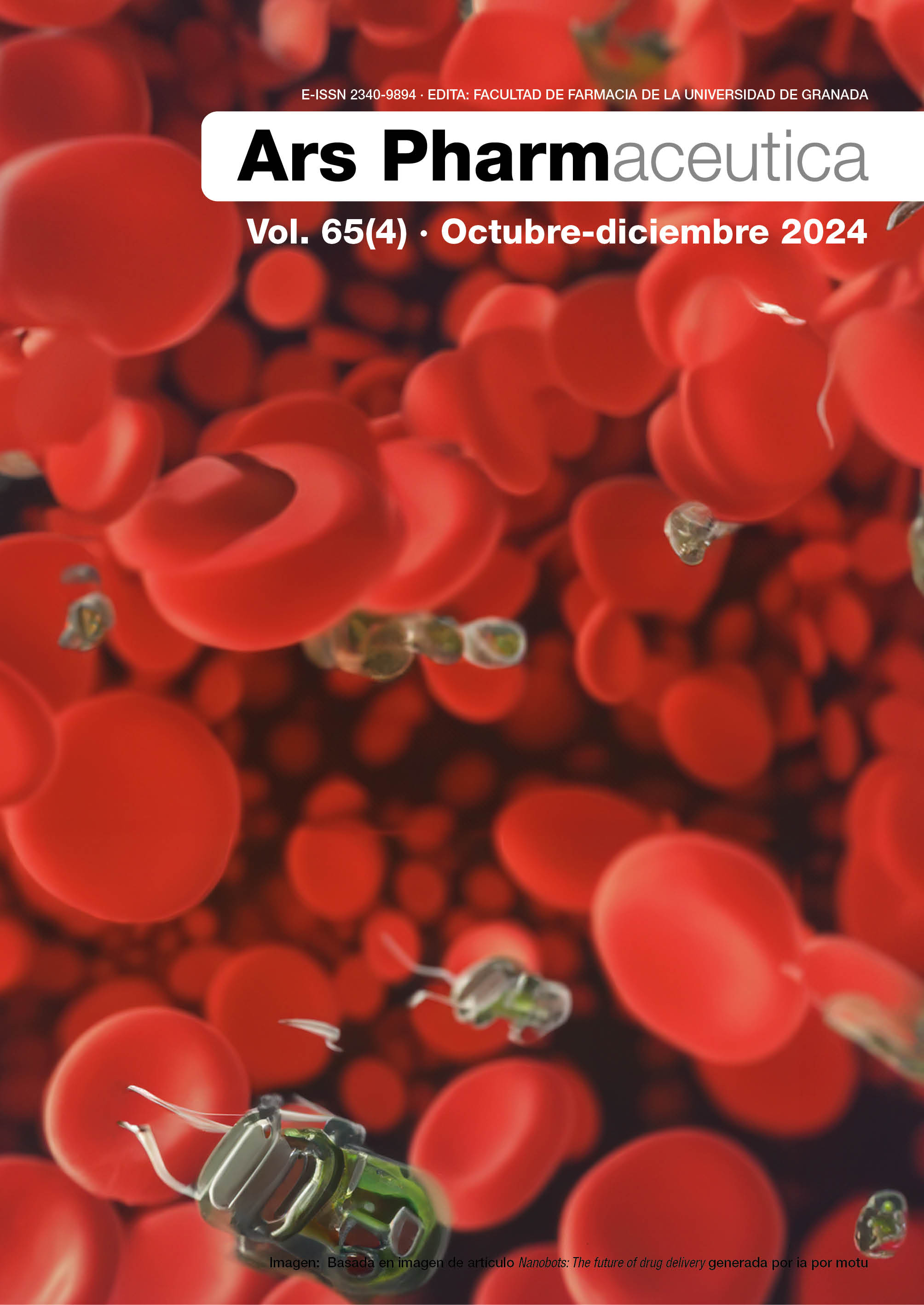Cutaneous vasculitis secondary to levamisole treatment in the nephrotic syndrome in paediatrics
DOI:
https://doi.org/10.30827/ars.v65i4.30958Keywords:
Nephrotic syndrome, levamisole, cutaneous vasculitisAbstract
Introduction: Nephrotic syndrome (NS) is a common childhood glomerular disease. The most common presentation in paediatric population is the idiopathic syndrome (INS). Treatment with levamisole is effective in frequent relapsing and corticosteroid-dependent NS. Studies have reported mild and rarely severe side effects, which subside after treatment withdrawal.
Results: We describe two clinical cases of frequently relapsing INS treated with levamisole that presented with cutaneous vasculitis with positive anti-neutrophil cytoplasmic antibodies. Both cases had skin lesions that disappeared after withdrawal of the drug, avoiding the use of other treatments with corticosteroids, immunomodulators and even amputations due to skin necrosis.
Conclusions: It is important to know the possible complications of levamisole treatment in paediatric patients with INS to proceed with drug withdrawal for resolution.
Downloads
References
Veltkamp F, Fensma LR, Bouts AHM. Incidence and relapse of idiopathic nephrotic sundrome: meta análisis. Pediatrics. 2021; 148:e202002949. Doi: 10.1542/peds.2020-029249 DOI: https://doi.org/10.1542/peds.2020-029249
Vivarelli M, Gibson K, Sinha A, Boyer O. Childhood nephrotic syndrome. Lancet. 2023; 402: 809-24. Doi: 10.1016/S0140-6736(23)01051-6. DOI: https://doi.org/10.1016/S0140-6736(23)01051-6
Trautmann A, Boyer O, Hodson E, Bagga A, Gipson DS, Samuel S et al. IPNA clinical practice recommendations for the diagnosis and management of children with steroidsensitive nephrotic syndrome. Pediatr Nephrol .2022, 38: 877-919. Doi:10.1007/s00467-022-05739-3 DOI: https://doi.org/10.1007/s00467-022-05739-3
Gruppen MP, Bouts AH, Jansen-van der Weide MC, Merkus MP, Zurowska M, Maternik M. et al. A randomized clinical trial indicates that levamisole increases the time to relapse in children with steroid-sensitive idiopathic nephrotic syndrome. Kidney Int. 2018, 93(2):510–518. Doi:10.1016/ j.kint.2017.08.011 DOI: https://doi.org/10.1016/j.kint.2017.08.011
Mühlig AK, Young LJ, Kemper MJ, Kronbichler A, Won Yang J, Lee JM, et al. Levamisole in Children with Idiopathic Nephrotic Syndrome: Clinical Efficacy and Pathophysiological Aspects. J Clin Med. 2019, 8:860. Doi: 10.3390/jcm8060860 DOI: https://doi.org/10.3390/jcm8060860
Barbano G, Ginevri F, Ghiggeri GM, Gusmano R. Disseminated autoimmune disease during levamisole treatment of nephrotic syndrome. Pediatr Nephrol. 1999, 13:602–3 doi:10.1007/s004670050753 DOI: https://doi.org/10.1007/s004670050753
Dartevel A, Chaigne B, Moachon L, Grenier F, Dupin N, Guillevin L, et al. Levamisole-induced vasculopathy: A systematic review. Semin Arthritis Rheum. 2019, 45: 921-6. doi: 10.1016/j.semarthrit.2018.07.010 DOI: https://doi.org/10.1016/j.semarthrit.2018.07.010
Rongioletti F, Ghio L, Ginevri F, Bleidl D, Rinaldi S, Edofonti A, et al. Purpura of the ears: a distinctive vasculopathy with circulating autoantibodies complicating long-term treatment with levamisole in children. Br J Dermatol. 1999, 140: 948-51. Doi: 10.1046/j.1365-2133.1999.02833.x DOI: https://doi.org/10.1046/j.1365-2133.1999.02833.x
Downloads
Published
How to Cite
Issue
Section
License
Copyright (c) 2024 Mª Amelia Gómez

This work is licensed under a Creative Commons Attribution-NonCommercial-ShareAlike 4.0 International License.
The articles, which are published in this journal, are subject to the following terms in relation to the rights of patrimonial or exploitation:
- The authors will keep their copyright and guarantee to the journal the right of first publication of their work, which will be distributed with a Creative Commons BY-NC-SA 4.0 license that allows third parties to reuse the work whenever its author, quote the original source and do not make commercial use of it.
b. The authors may adopt other non-exclusive licensing agreements for the distribution of the published version of the work (e.g., deposit it in an institutional telematic file or publish it in a monographic volume) provided that the original source of its publication is indicated.
c. Authors are allowed and advised to disseminate their work through the Internet (e.g. in institutional repositories or on their website) before and during the submission process, which can produce interesting exchanges and increase citations of the published work. (See The effect of open access).























